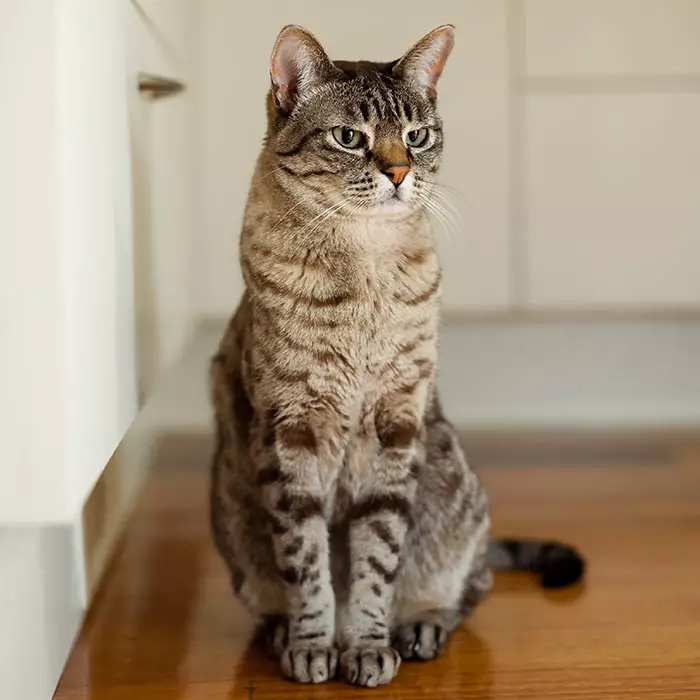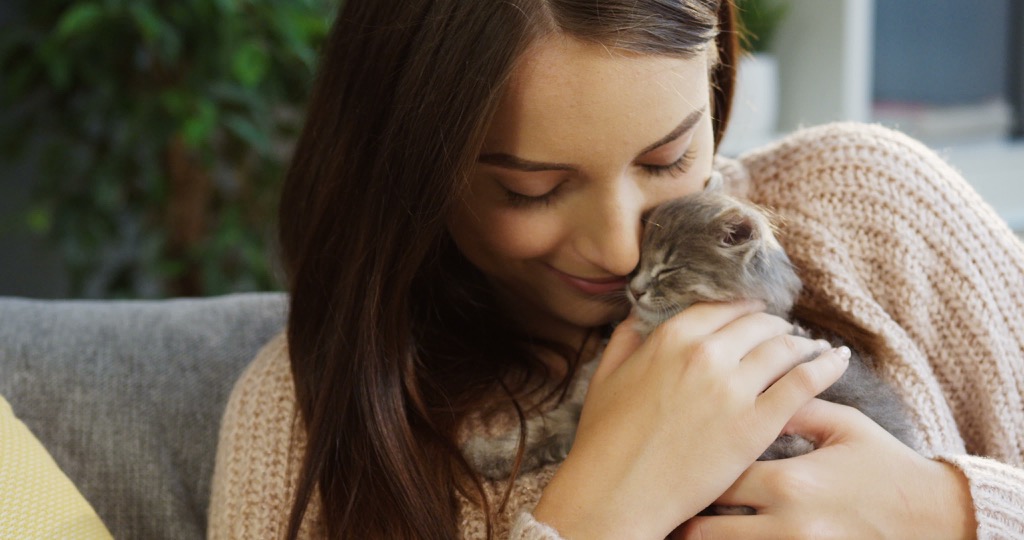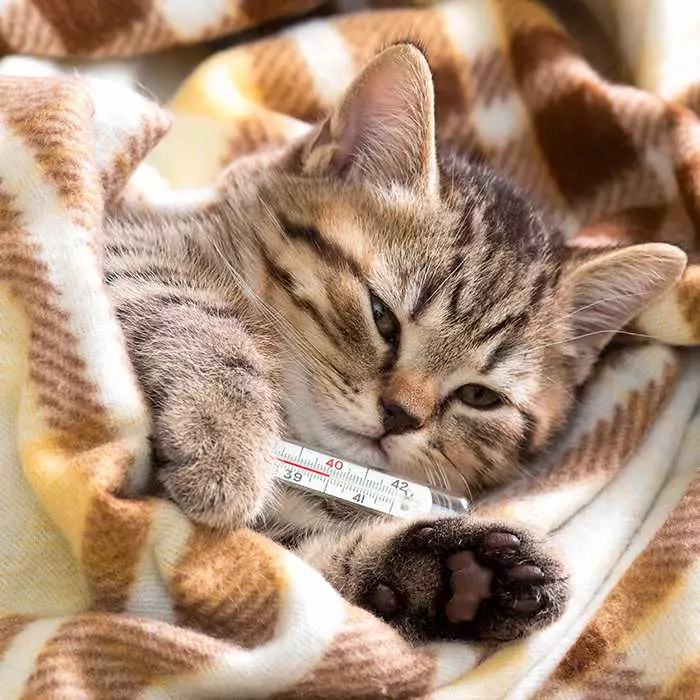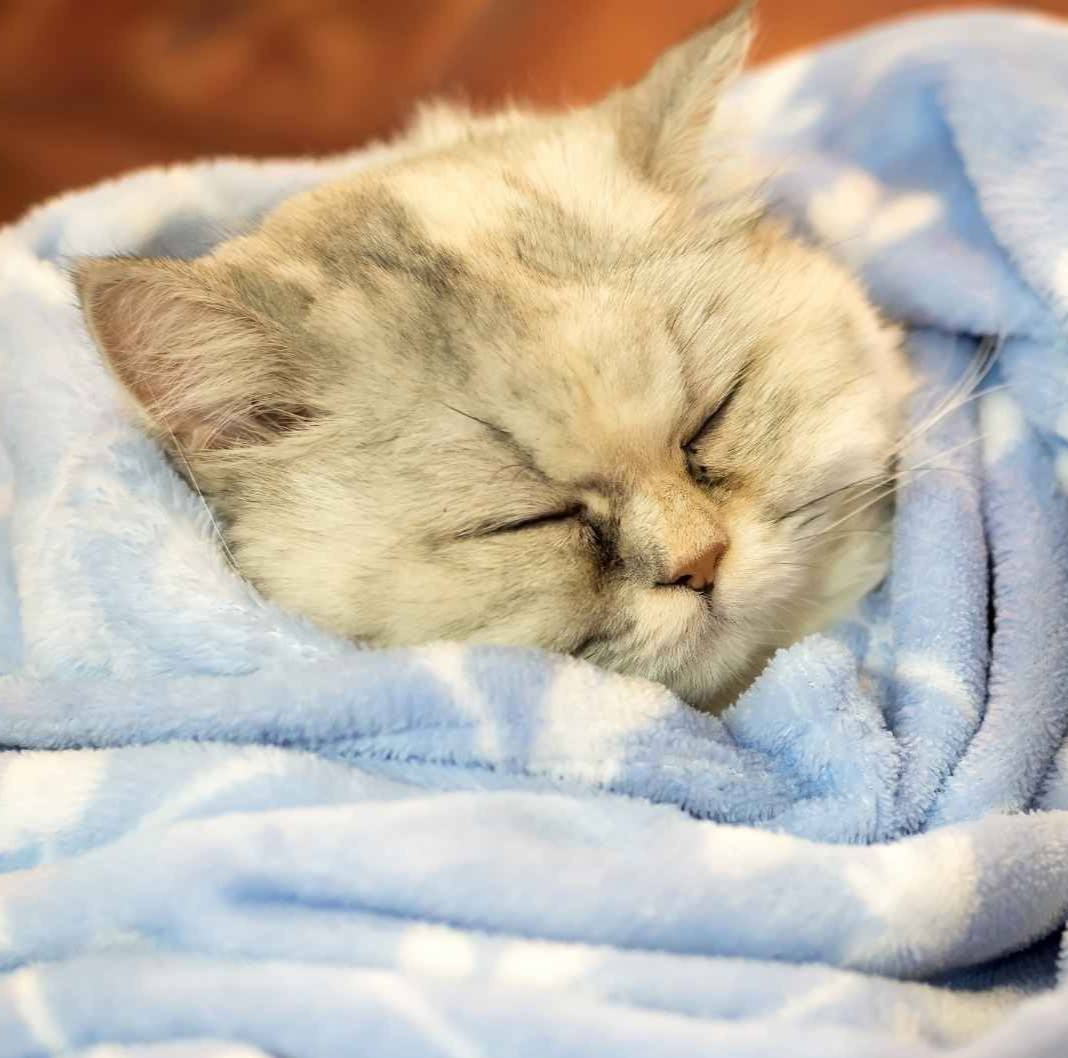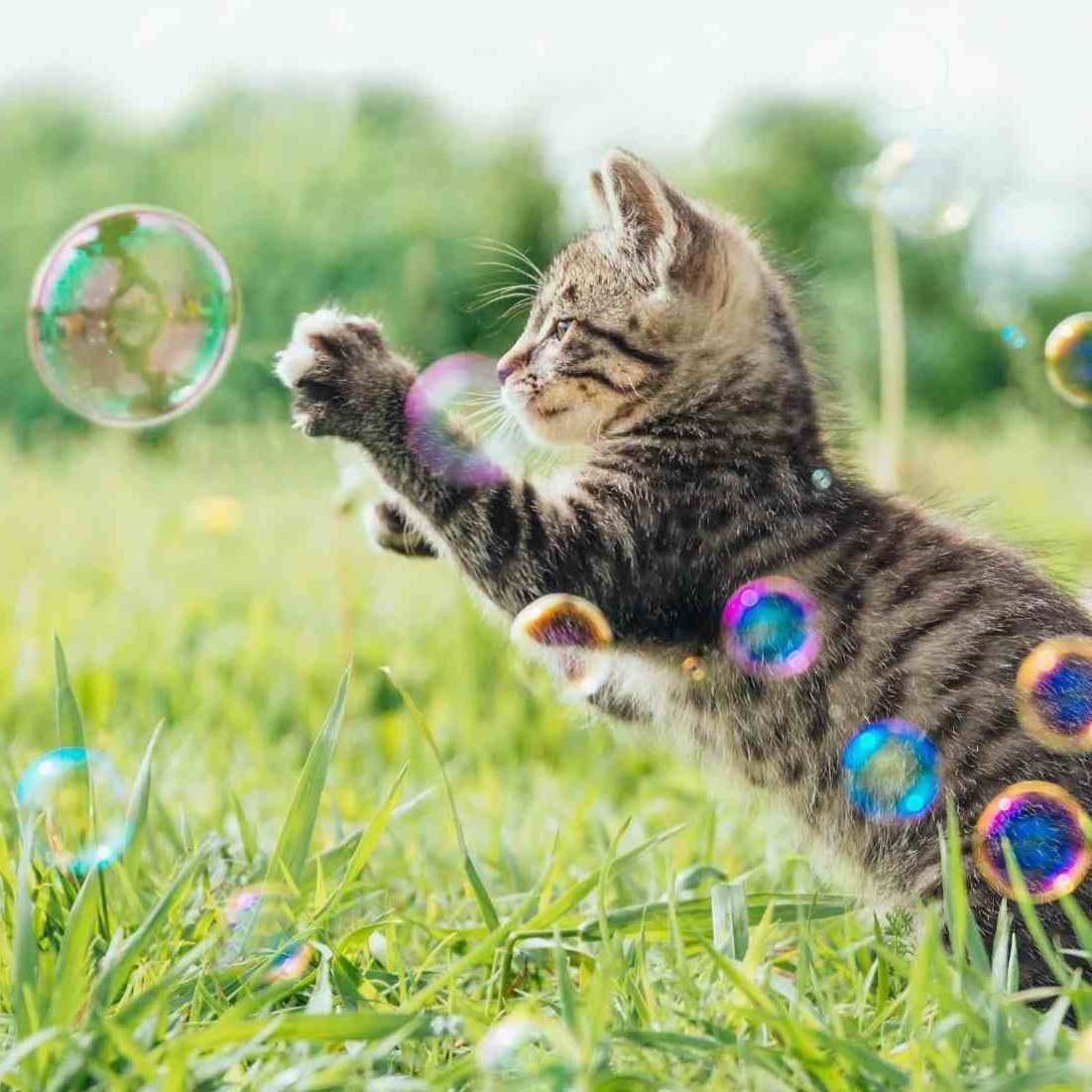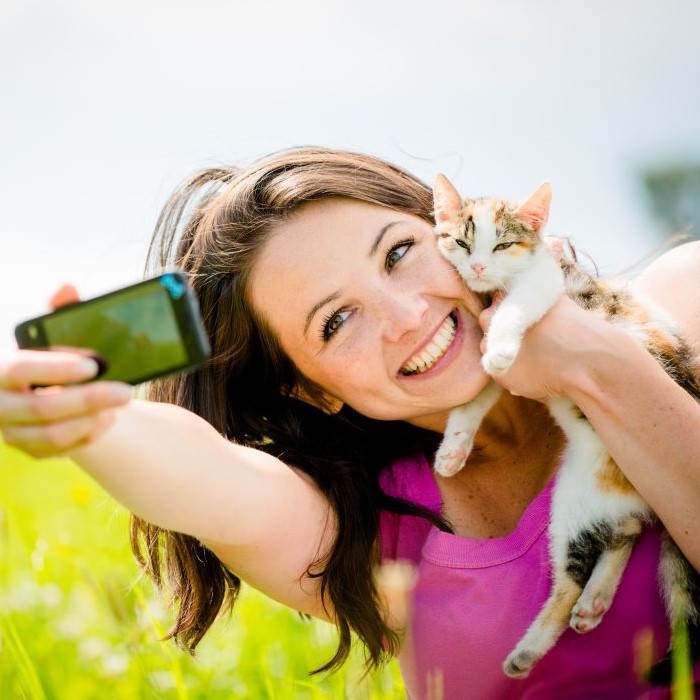Indoors or outdoors? Which is best for your cat
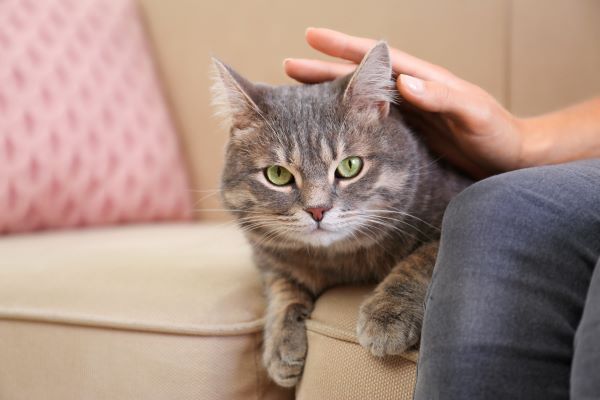
Our cats bring us many benefits such as companionship, affection and enjoyment. They also bring responsibilities and obligations to ensure that we give them the care they need for a healthy, happy and safe life – after all, they only have one, despite the pervasive “nine lives” myth!
The cost of being an outdoor cat
Did you know that in 2022, accidental injuries were in the top five reasons cats went to the vet? These accidents include bite injuries, cat bite abscesses, wounds and fractures caused by outdoor incidents like road accidents and snake bites. Many of these incidents occur in free-roaming cats, so they could be avoided by keeping our felines indoors.
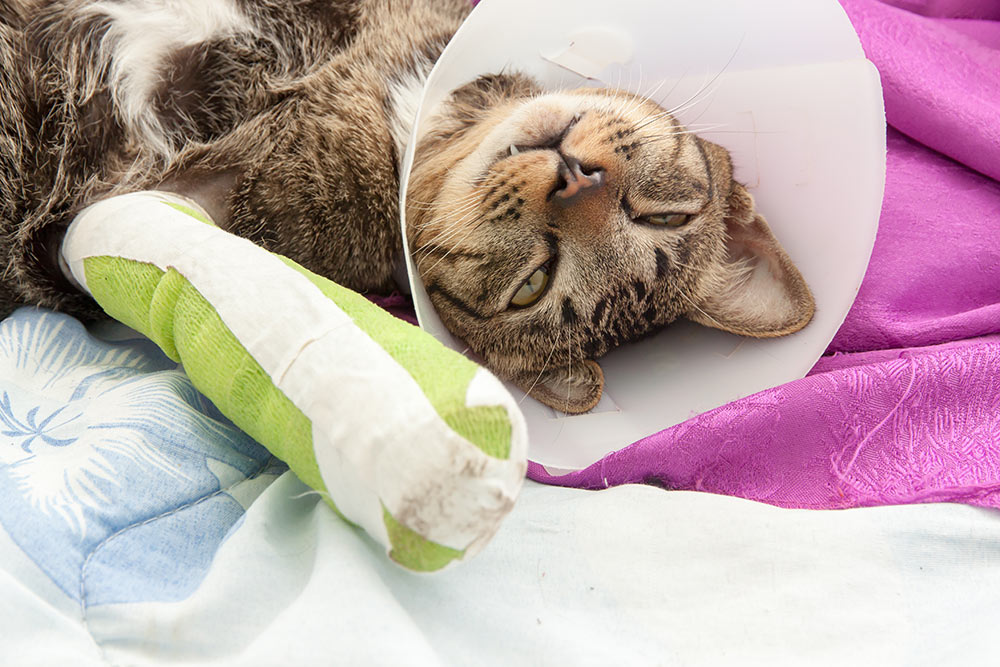
Outdoor cats often have significantly higher vet bills than their indoor siblings, sometime running into the thousands of dollars. The table below illustrates the average treatment cost and highest treatment cost of the most common cat accidents according to PetSure claims data from 2022.
Injury / accident |
Average cost of treatment |
Highest cost of treatment |
| Snake bite | $2,200* | $10,168* |
| Cat fight / bite injury | $562* | $37,435* |
| Broken rear leg | $3,805* | $18,505* |
*Based on PetSure claims data, 2022 calendar year. Reimbursement for these claims under a pet insurance policy, would be subject to limits, such as annual benefit limits or sub-limits, benefit percentage, applicable waiting periods and any applicable excess. Cover is subject to the policy terms and conditions. You should consider the relevant Product Disclosure Statement or policy wording available from the relevant provider. Please note that values calculated are based on all claims for that condition and medically related conditions in each calendar year.
Outdoor cats are also more susceptible to contracting infectious diseases from other cats such as feline immunodeficiency virus (FIV), feline leukaemia and feline infectious peritonitis.
Indoor cats live longer and are healthier
Increasingly, feline pet parents are becoming aware of the many dangers that outdoor roaming cats encounter. Cats who roam freely tend to have significantly shorter lifespans – by almost 10 years according to the Cat Protection Society – as a result of exposure to traffic, attacks from other animals, untreated health conditions, diseases and injuries, and weather extremes.
Cats allowed outdoors have an average life expectancy of 5 years, while indoor cats can live for 15 to 20 years.
Studies have found that keeping your cat indoors can significantly reduce the risks of accidental injury, poisoning, transmitting diseases and getting lost.
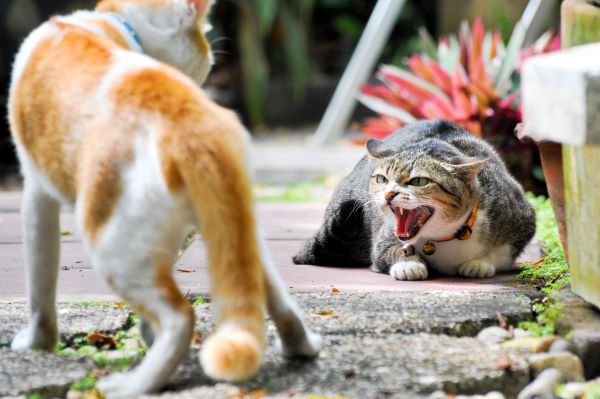
It’s important to be aware that, despite their much safer lifestyles, indoor cats can still get sick and accidents can happen within the home. Falls from windows or balconies, poisonings from plants, cleaning products or medications, washing machine/tumble dryer incidents, scalds, burns and ingesting foreign objects are all risks facing cats who spend time indoors.
Also, indoor cats are more prone to weight problems as they don’t get the same level of exercise as they would if allowed freely outdoors.
The risks cats pose to native wildlife
Responsible cat ownership requires owners to consider not only the needs of their own fur babies, but also the environmental issues associated with keeping a cat. Cats are hunters by nature, and outdoor cats pose a tremendous threat to native wildlife such s birds, reptiles and small mammals. Even cats that are well-fed will sometimes hunt and kill wildlife if the opportunity presents itself.
For these reasons, some councils have introduced laws to enforce night-time curfews or even complete confinement. Contact your local council to find out if these apply in your area.
Transitioning to indoor life
Although still a divisive issue, there is a growing awareness by cat owners of the benefits and need to contain cats, resulting increasing numbers of cats that are kept solely indoors. Most cats adapt well to living indoors, especially if this lifestyle is implemented from an early age. However, adult cats that are used to roaming freely outdoors may have difficulty adjusting to this dramatic change to their lifestyle.
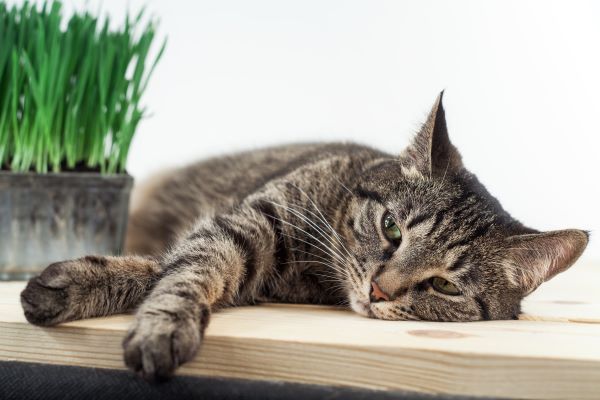
In such cases, we recommend keeping cats inside overnight, and gradually increasing the time they remain indoors during the day. Providing cats with access to a safe and secure outdoor enclosure or cat run will go a long way in easing their transition to contained, indoor living. This way they can still enjoy the great outdoors and a spot of bird-watching without encountering hazards like other cats, dogs, cars and snakes! See more on this below.
It is very important to supervise cats initially to make sure they are happy and stimulated indoors and that they are unable to escape. Some cats will find ingenious ways to thwart their new “captivity” that didn’t occur to you! Secure balconies and windows to avoid falls and be alert for “escapees” when opening and closing external doors.
Outdoor access for indoor cats
In order to thrive, cats need physical and mental stimulation. Outdoor access and exercise are extraordinarily effective in preventing feline behavioural problems, so it’s important that indoor-only cats have plenty of opportunity to obtain these.
Giving indoor cats exposure to the outdoors in a safe and contained environment is the ideal solution, and not always as difficult as you may think. One very effective way is to set up a cat run or cat enclosure in your outdoor living space. This provides a safe place where your cat can enjoy the fresh air, sunshine, and sights and sounds of the outside world, and also have room to move and exercise.
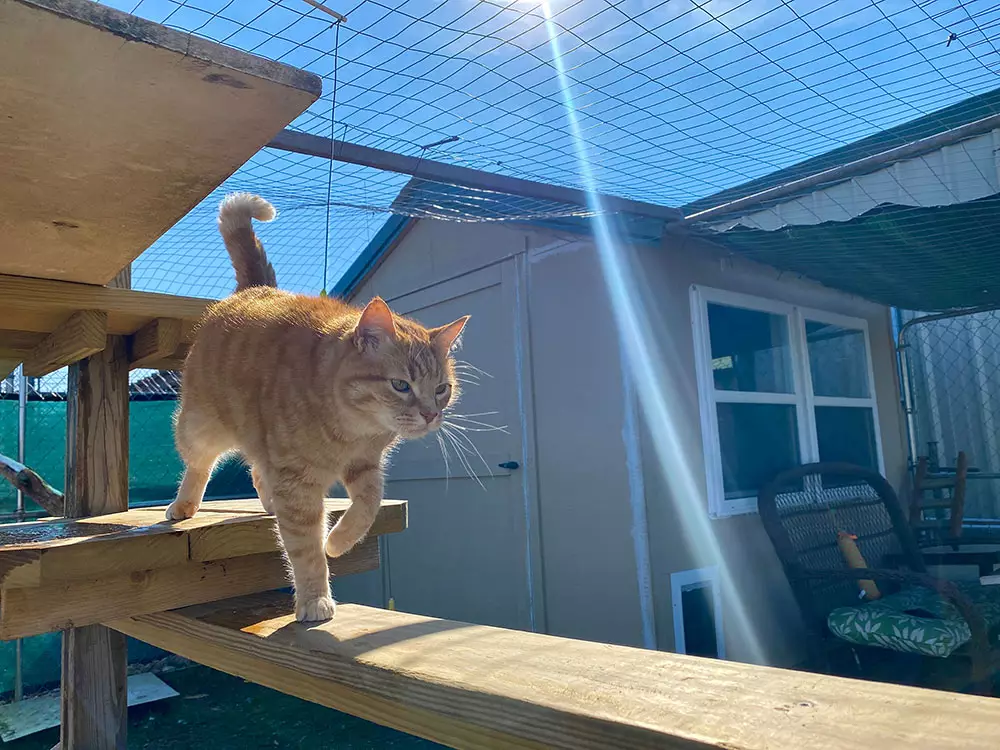
Whether you have a garden, backyard, veranda or balcony, there are a number of options for providing a safe outdoor cat run or cat enclosure. The most common methods are to cat-proof your fence or to use netting to enclose all or part of your outdoor space. You can purchase or construct enclosures that connect to a window or cat flap so they can go in an out as they please, or self-enclosed types that you pop them in for a few hours at a time. If you go for the latter, be sure to provide a water bowl, a litter tray, some toys, something to climb up and somewhere to perch or nap, and a shade cover if necessary.
See our article Best Outdoors Enclosures & Runs for Cats in Australia
Creating a stimulating indoor environment
Unfortunately, there is reduced opportunity in an indoor environment for many natural feline behaviours, such as hunting and exploration. As a result, indoor cats may be more at risk of experiencing boredom and frustration, particularly if the indoor environment doesn’t provide for the cat’s environmental needs.
An enriching environment is the key to keeping your cat happy indoors; even more so if you are unable to set up a safe outdoor space. Indoor environmental enrichment will allow your cat opportunities to express normal behaviours such as scratching, playing, and hiding. Multi-level climbing and look-out perches, scratch posts. interactive toys, and indoor runs in which to move about are good options.
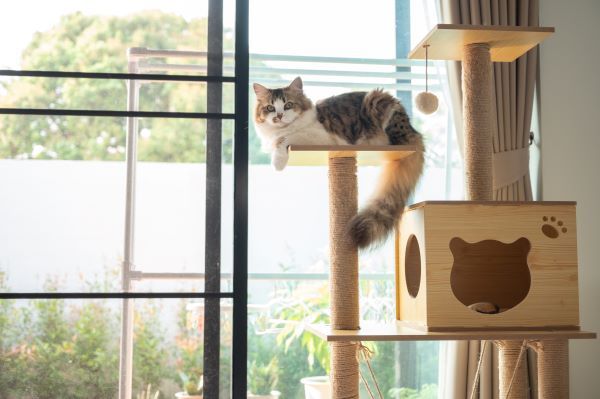
Include the outdoor environment within your indoor setting as much as possible. For example, you can purchase pot plants containing feline-friendly plants that cats like to nibble on when outdoors, such as cat grass, catnip or cat mint. Avoid plants that are toxic to cats such as lilies. For more information, see the Cat Protection Society’s factsheet on Cat-friendly Flowers.
Hunting is another outdoor activity that cats like to engage in; even if they don’t catch any prey, they often pounce on leaves or lizards. You can replicate this to some extent by hiding food or by providing it in food-releasing toys. Of course, cats love to climb trees and sit somewhere high up where they can watch the world from above, so allow your cat access to windowsills, ledges and shelves, preferably where they can see out as well as in.
If space permits, portable cat runs and small catios can be set up indoors, to add variety and create a secluded space. However, many cat owners have found that a good old cardbox box or even a large and sturdy paper bag does the trick just as well!
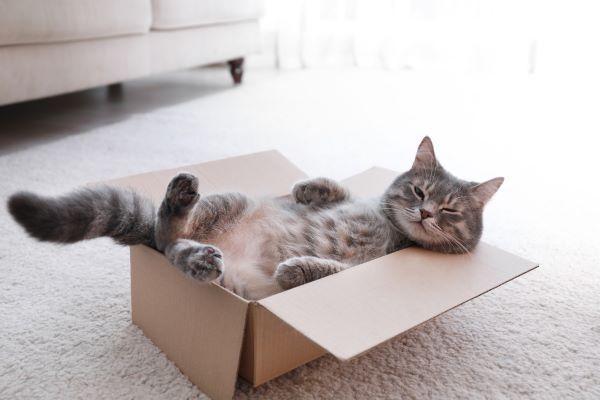
Other options for safe outdoor activity
Cat harness and lead
With time and patience, you can train your cat to spend time outdoors on a harness and lead. Cat harnesses are available for cats of all sizes; they simply fit around the cat’s body and attach to a lead, allowing you to take your cat safely outside. This is a good option if your garden or yard is not securely enclosed and you want to tether your cat on a long lead to play, explore or simply laze in the sun, while you remain close by to ensure no mishaps occur.
Younger cats and kittens can be leash-trained to go for walks outside of your property. However, many cats are simply not suited to lead walking, and this may be a good option only for particularly relaxed and outgoing felines.
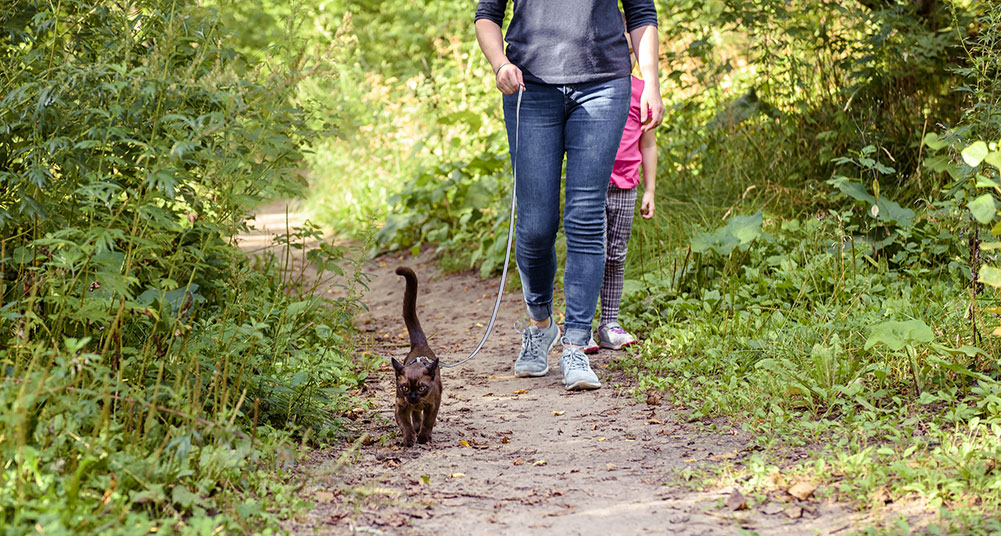
If you live in a peaceful neighbourhood in which you can walk without encountering loose dogs, you may have more success, particularly if you start while your cat is young.
See our article Walking with cats: Tips for leash walking, hiking and camping with your cat
Supervised outdoor time
You may prefer to restrict your cat’s outdoor access to supervised time in the garden or yard. This will entail keeping a close eye on your cat and putting a stop to any attempts to climb the fence and escape from your property. Watch out for any overhanging tree branches or jumping points may provide a swift exit route – these may need to be removed in the interests of your cat’s safety.
A small outdoor area or a section of a larger outdoor area can often be made cat-proof through clever use of fencing or netting, doing away with the need for constant supervision.
Some cats can be harnessed and secured to a stationary object to enjoy the outdoors while you are relaxing or gardening nearby (but be sure to never leave your cat alone while tethered).
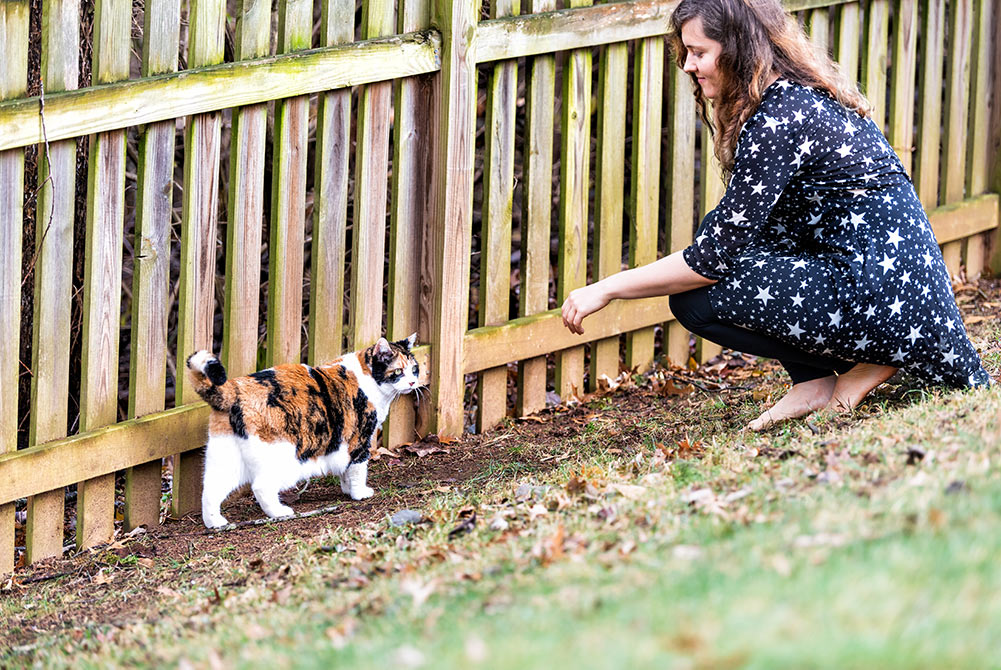
If your cat is inclined to wandering off, it may prove helpful to plant a border around the area where you want your cat to spend outdoor time. Citrus smelling plants and herbs are great for this purpose – they are non-toxic, and most cats do not like the smell of citrus and will not want to brush past them to escape. It is possible to design an enclosed garden that is wildlife friendly as well as providing safe and interesting space for your cat (you can obtain advice on this topicfrom your local wildlife community group, WIRES, or the environment department of your local council).
In a nutshell…
Research shows that cats that are kept inside live longer, and are healthier and happier than those that are allowed to roam. In addition to being exposed to many dangers, roaming cats pose a real threat to our native wildlife. Even cats that have been outside all their lives can learn to enjoy the comfort and security of home life, particularly if they continue to have safe and secure access to the outdoors.
Enriching your cat’s environment is the key to keeping your cat happy at home. Creating a safe space outdoors, or bringing the outdoors inside, can do wonders.
Bow Wow Meow Pet Insurance can help protect you and your cat should an unexpected trip to the vet occur.
-
Find out more about our cat insurance options
-
Get an online pet insurance quote
Bow Wow Meow is proud to have been awarded winner of Canstar’s ‘Most Satisfied Customers’ Award in the Pet Insurance category for both 2024 and 2025!
Bow Wow Meow is proud to have been chosen as Product Review’s Pet Insurance Award Winner every year from 2018 to 2025! This is based on 2,995 independent customer reviews (as at 21/01/2025), with an overall rating of 4.3*
Google Review rating = 4.5* (based on 968 reviews)
Trust Pilot rating = 4.6* (based on 531 reviews)
Bow Wow Meow is proud to have been chosen as Product Review’s Pet Insurance Award Winner every year from 2018 to 2025! This is based on 2,995 independent customer reviews (as at 21/01/2025), with an overall rating of 4.3*
Google Review rating = 4.5* (based on 968 reviews)
Trust Pilot rating = 4.6* (based on 531 reviews)
Bow Wow Meow has been chosen as a winner in the Finder Pet Insurance Awards 2024. Finder’s panel of experts analysed over 140 quotes to award our Ultimate Care Plan the winner of the “Pet Insurance – Value” category.


